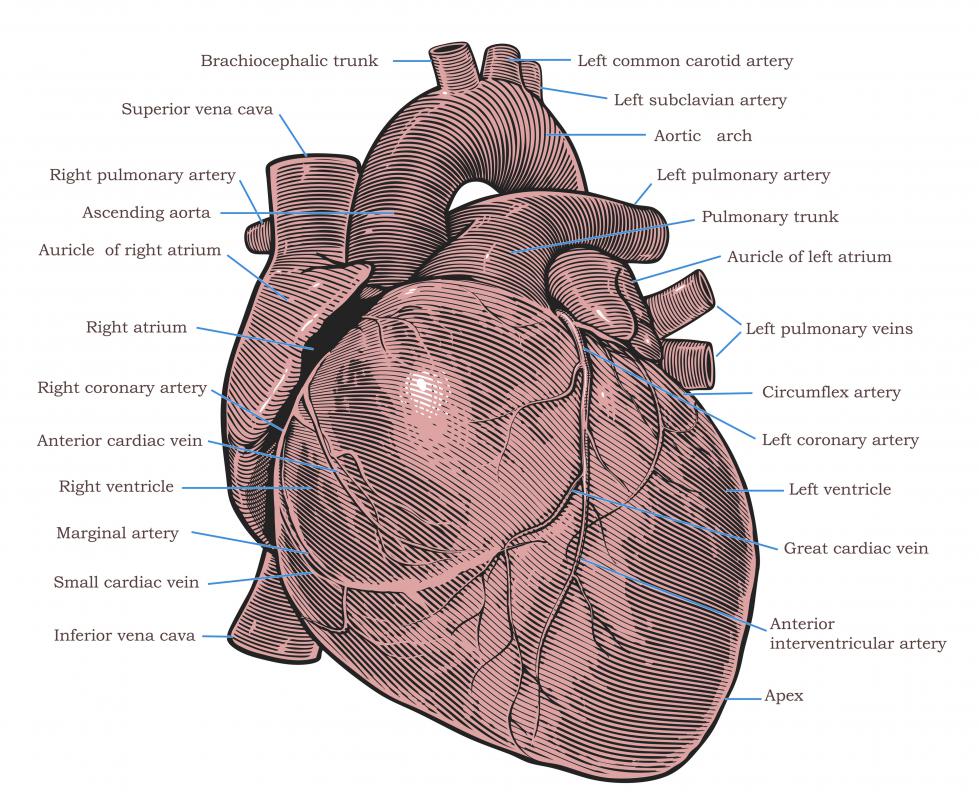At WiseGEEK, we're committed to delivering accurate, trustworthy information. Our expert-authored content is rigorously fact-checked and sourced from credible authorities. Discover how we uphold the highest standards in providing you with reliable knowledge.
What are the Different Types of Antiarrhythmic Drugs?
According to a standard developed in 1970, there are usually four classifications of anti-arrhythmic medications, including sodium channel blockers, anti-sympathetic nervous system medications, potassium channel blockers, and calcium channel blockers. The first class is generally further subdivided into categories a, b and c, representing weak, moderate, and strong blocking ability. Another group is sometimes called class V, or miscellaneous. Some anti-arrhythmic medications may fall into more than one category, as they produce more than one action.
Class I anti-arrhythmic drugs, or sodium channel blockers, correct arrhythmias by binding to and blocking channels that allow sodium ion access. Either this action produces a longer resting phase before cells become susceptible to contraction stimulation or the action extends the period of time in which the cells receive stimulation before producing a contraction. Physicians generally refer to these phases as the effective refractory period (ERP) and the action potential duration (APD). Medications in this classification might prolong either or both phases, but they generally have no effect on the electrical conduction tissue of the heart. Procainamide, lidocaine and propafenone are examples of class I sodium channel blockers that might be used to treat ventricular tachycardia or atrial fibrillation.

Beta blockers, which belong to class II of the antiarrhythmic drugs, typically bind to the beta-adenoceptors of electrical conduction tissue and other cardiac tissue, preventing attachment of the neurotransmitters epinephrine and norepinephrine. Certain medications block β1 and β2 receptor sites, while others only block β1 sites. Blocking neurotransmitter access generally reduces or eliminates stimulation by the sympathetic nervous system. This action usually slows the heart rate by controlling the level of contractility and electrical conduction. Atenolol, carvedilol and propanolol are beta blockers that physicians might use to treat heart attacks, hypertension and tachycardia.

Potassium channel blockers, comprising the class III anti-arrhythmic drugs, bind to channels of nonconductive tissue that allow potassium ions to leave the cell. This action not only prolongs the relaxation phase (ERP), but also extends the amount of time cells require to become adequately stimulated and produce a contraction (APD). These actions control tachycardia by preventing premature stimulation produced by anomalous triggers. Some medications in this group perform actions of more than one class. Amiodarone, though considered a potassium channel blocker, also displays properties of the class I, II, and IV medications, and sotalol is also a beta blocker.

The class IV anti-arrhythmic agents, known as calcium channel blockers, affect the conductive and nonconductive tissues of the heart along with vascular smooth muscle. Blocking these channels usually prevents calcium ions from entering the cell, which produces relaxation. This action typically slows the heart rate by decreasing conduction speed and the level of contractility. Diltiazem, nifedipine and verapamil are calcium channel blockers that physicians might prescribe for the treatment of angina, atrial fibrillation, tachycardia, or hypertension.

Adenosine and digoxin belong to the miscellaneous, or class V group, of anti-arrhythmic drugs that physicians often refer to as cardiac glycosides. These medications affect the heart like other anti-arrhythmics but do so without blocking ions. They generally slow or decrease the conductivity of the heart, though digoxin also extends the refractory period. Cardiac glycosides may be prescribed for tachycardia or atrial fibrillation.
AS FEATURED ON:
AS FEATURED ON:


















Discuss this Article
Post your comments